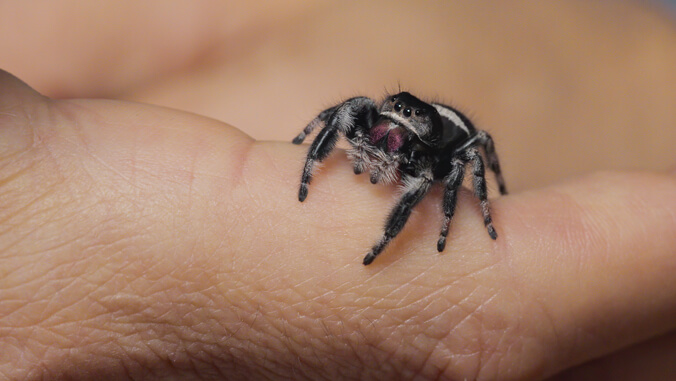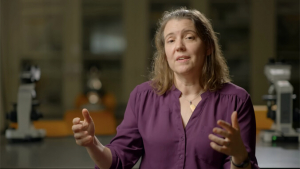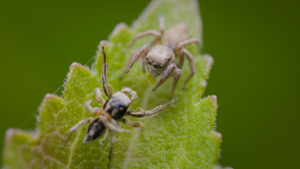
A University of Hawaiʻi at Mānoa professor is trending on YouTube for her explanation of how jumping spiders can help us understand colors.
School of Life Sciences Professor Megan Porter is one of several scientists in the video by Veritasium. The video garnered more than one million views in just one day, and has racked up nearly two million views in just three days.

“I was amazed, but also delighted, that so many people were interested in understanding the science of color vision in jumping spiders,” Porter said.
Porter and a team of researchers are studying the world’s six thousand jumping spider species to understand the evolution of color vision. Unlike most spiders, jumping spiders are active hunters, relying on a remarkable visual system to guide their attacks. They have eight eyes that are specialized for different tasks, with the large, forward-facing eyes providing extraordinary color and detail within a narrow visual field.

The video helps viewers understand colors by exploring the evolution, biological mechanisms, and diverse perception systems of color vision in jumping spiders, offering insights into the complexities of sensory perception across species.
“Jumping spiders, beyond being charismatic animals in their own right, are a fantastic example of all the different ways animals have evolved to achieve color vision,” Porter said. “The film does a phenomenal job of explaining the mechanisms of color vision and why studying the differences in how other animals detect color can lead to a better understanding of our own perception of the world around us.”

The film was supported by a National Science Foundation (NSF) grant called “Collaborative Research: Repeated Evolution of Color Vision in Jumping Spiders: An Integrated Approach to Understanding Diversification of Visual Systems and Signals.” The NSF funding allowed the crew to film the research team’s fieldwork in Hawaiʻi and South Africa, along with lab work at UH Mānoa and other institutions.
Veritasium’s YouTube page has more than 15.7 million subscribers, and features engaging and informative videos on a wide range of scientific topics, aiming to explain complex concepts in an accessible and entertaining way.
The School of Life Sciences is housed in UH Mānoa’s College of Natural Sciences.

